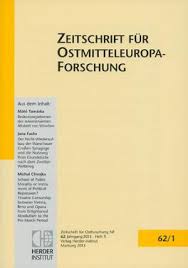Nationale Selbstvergewisserung im Polen der Nachwendezeit: das Marienheiligtum Licheń
Our Lady's sanctuary at Lichen and its recourse to the icon of Czestochowa. National self-ascertainment in Poland after the fall of the Iron Curtain
Author(s): Agnieszka GąsiorSubject(s): Architecture, Visual Arts, 19th Century, WW II and following years (1940 - 1949), Transformation Period (1990 - 2010)
Published by: Verlag Herder-Institut
Keywords: Lady's sanctuary at Lichen; recourse to the icon of Czestochowa; National self-ascertainment; Poland fall of the Iron Curtain;
Summary/Abstract: With the startling construction of a gigantic basilica (1994-2004), Liehen, a village in central Poland hardly known to that date, suddenly advanced to one of the country's most popular places of worship for the holy virgin. In the centre of veneration is an inconspicuous paining, legitimated, on the one hand, by appearance miracles in the 19th Century, and by references to other manifestations (the national icon of Czestochowa, the miraculous picture of Rokitno and Maria Fatima) already recognized for their powers. The attractiveness of the sanctuary, however, is mainly determined by the association of the Marian cult with Polish history. Didactically edited, the latter is represented by a large ensemble of monuments in an often self-evident and therefore easily comprehensible way. While, initially, following the tradition of Czestochowa, Poland's painful history, i.e. the victim topos as well as the condemnation of the crimes committed in World War II and the Stalinist Soviet Union, was predominant, a new concept of the victorious and successful Poland was created in Liehen after 1989, which is reflected in the building of the new basilica and its iconography. This article takes a look at the Visual strategies in dealing with Marian symbolism and the history of Liehen, examining its idea content, its development and the driving forces behind the building and its addressees.
Journal: Zeitschrift für Ostmitteleuropa-Forschung
- Issue Year: 57/2008
- Issue No: 3
- Page Range: 292-328
- Page Count: 37
- Language: German

